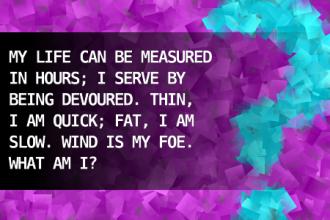
Admit That You Did That
An old Indian lined up all of his 10 little Indian sons and stood in front of them.
He then asked, "Who push port-a-potty over cliff?"
Nobody answered him.
He then asked again, "Who push port-a-potty over cliff?"
Again nobody answered.
The old Indian said, "I tell story of Georgie and Georgie father. Georgie chop down cherry tree. Georgie tell truth, Big Georgie no punish." So the Indian asked again,
"Who push port-a-potty over cliff?"
To which the littlest Indian replied, "I push port-a-potty over cliff."
The old Indian then shakes and spanks him, for his punishment. When he is done, the little Indian asks, "Georgie tell truth, Georgie no get punish. I tell truth, I get punished. Why you punish, father?"
The old Indian replied, "Big Georgie not in cherry tree when it got chopped down!!!"

